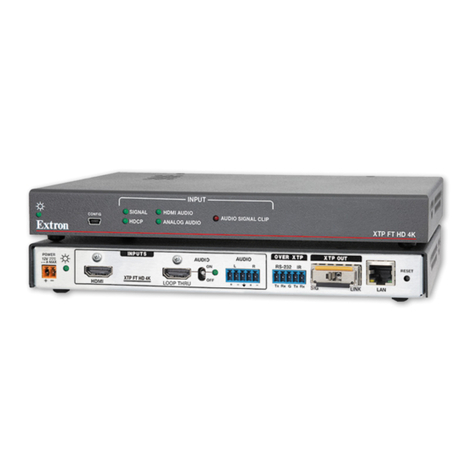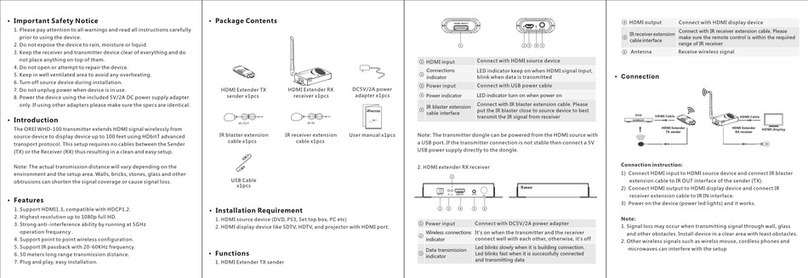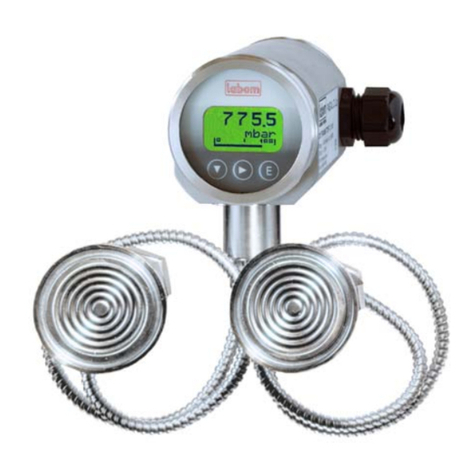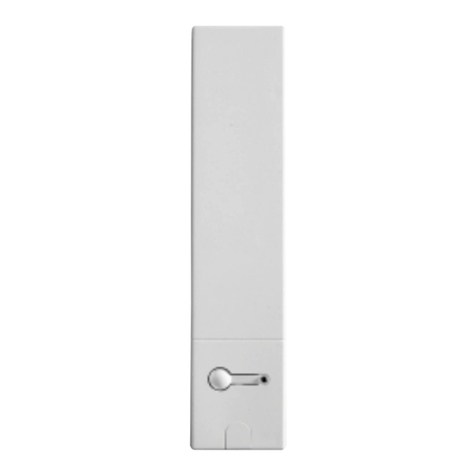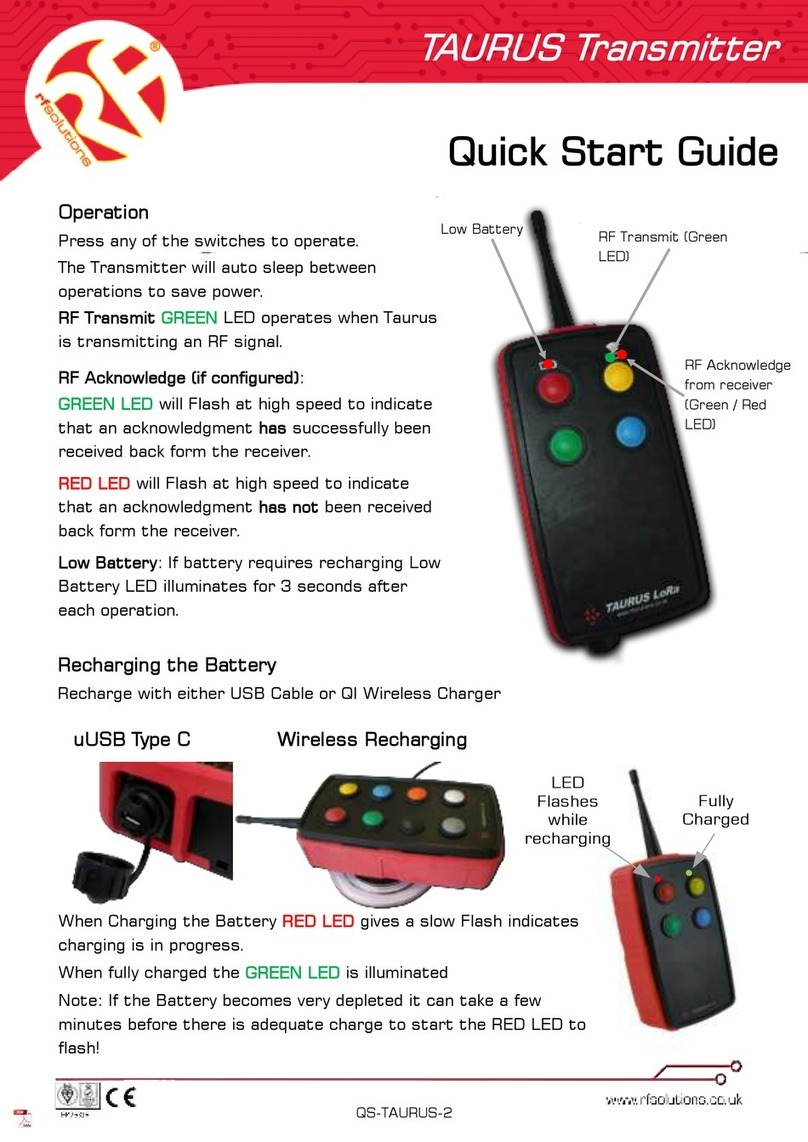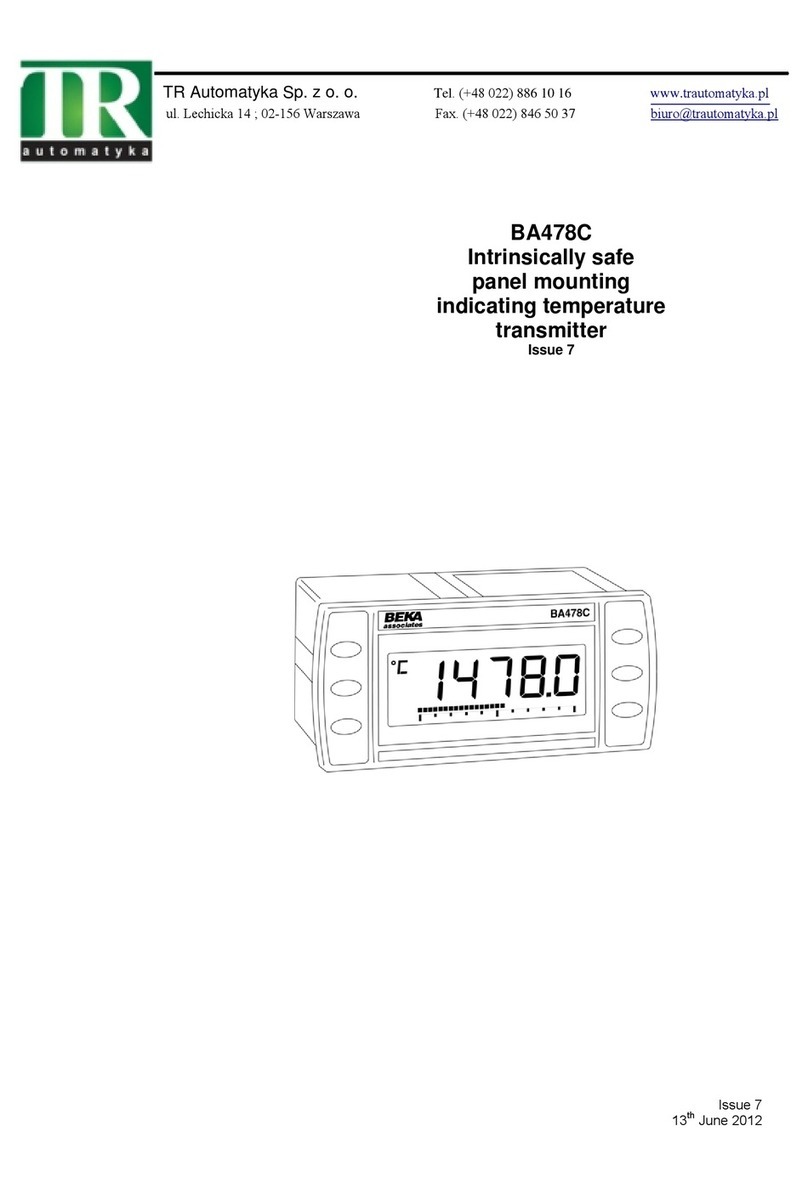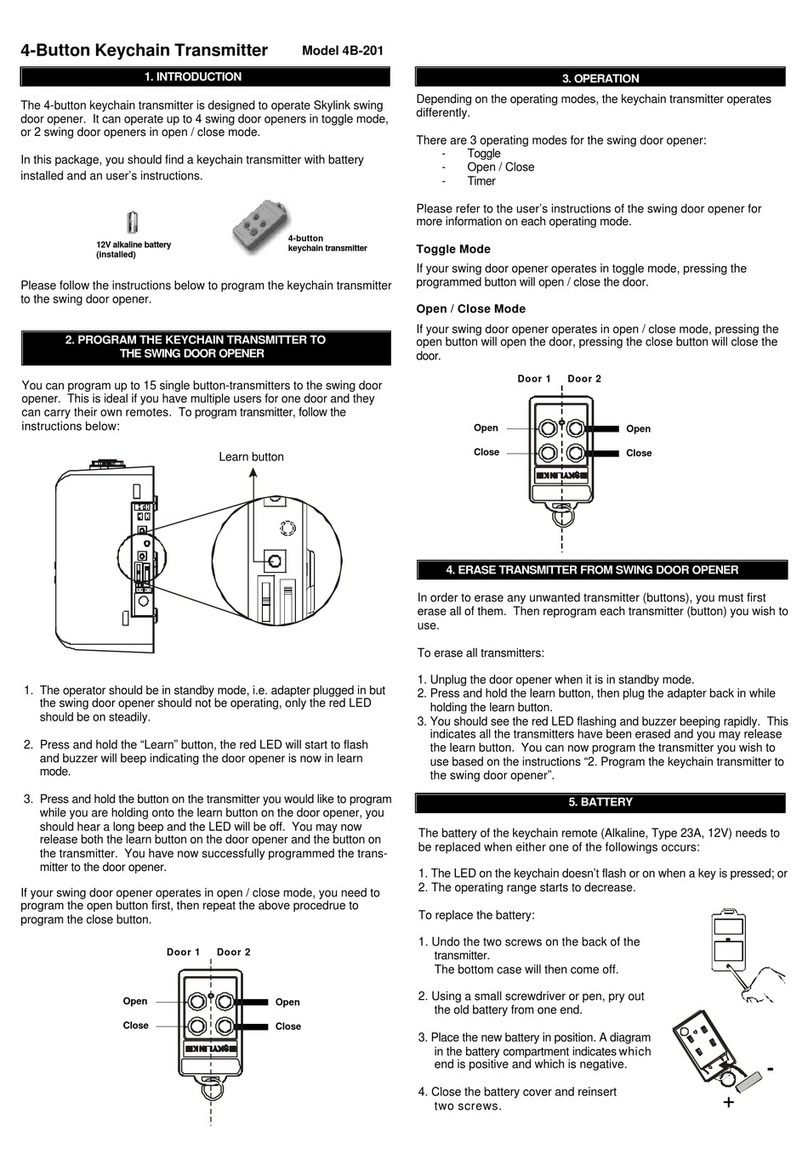NOSHOK KING-GAGE 5900 Use and care manual

Effective: September, 2010 (replaces February, 1998) EX-1710-1
Operation/Calibration Manual
User Guide to Range Calculation, Calibration
Procedures, Zero/Span Adjustments
for Differential Pressure Transmitters
Model 5900
D/P Module
4 mA to 20 mA Pressure Transmitter
Multiple Tank Level Display
KING-GAGE, A NOSHOK Company I 1010 West Bagley Road, Berea, Ohio 44017 I Ph: 855-367-2494 I www.king-gage.com

page 2
Model 5900 D/P Module EX-1710-1
© 2010 King Engineering Corp. All rights reserved.
The information contained in this manual was accurate at
the time of release. Specifications are subject to change
without notice.
WAR RANTY—All King Engineeringproductsare guaranteed
to be free from defects in material and workmanship for
one year from the date of purchase. Any product or part
found to be defective under normal use within one year
of purchase will be repaired or replaced at no charge if
returned to the company in Berea, Ohio within ten days
of discovery of the defect. No other warranties, whether
express, implied or statutory, including the warranties of
fitness for a particular purpose or merchantability, are given
by this agreement. The exclusive remedy for nonconformity
of these goods shall be repair and/or replacement of the
nonconforming goods or parts.
Seller will not be liable for consequential damages resulting
from breach of this agreement. The term "consequential
damages" shall include but shall not be limited to damage
to all machines, equipment and goods other than the goods
sold hereby, interruption of production, loss of profits,
delays of any kind, administrative expense and overhead.
Revisions:
April, 1987 –original release
December, 1987 –revised test equipment specifications
August, 1990 –revised zero/span adjustment
August, 1991 –corrected zero/span positions (pg. 11)
September, 1994 –revised text (update model numbers)
February, 1998 –LP2 3-terminal signal connector (pg. 15)
September, 2010 –revised voltage/load capacity

page 3
Model 5900 D/P Module EX-1710-1
Table of Contents
Specifications............................................................................................. 4
Span Adjustment Range............................................................................. 4
Pressure Connections................................................................................. 5
Power Requirement ................................................................................... 5
Load Capacity at Supplied Voltage ............................................................. 5
Calibration—Zero/Span Adjustment ........................................................... 6
Low Pressure Input (for differential pressure) .............................................. 8
Calibration Test Setup (Typical) ................................................................... 9
Pressure Range Calculation ...................................................................... 10
Troubleshooting....................................................................................... 11
5900 - 1 - 2
Fittings
1= none (1/8"NPT connection)
4= Swagelok 1/4"tube ×1/8"NPT
(compatible with copper or poly tubing)
Range
0= 0–5 psid /0 –0.3 bar
1= 0–10 psid /0 –0.69 bar
2= 0–15 psid /0 –1.03 bar
3= 0–30 psid /0 –2.06 bar
4= 0–50 psid /0 –3.44 bar
Model No. Designations

page 4
Model 5900 D/P Module EX-1710-1
Application
The D/P Module is a pneumatic-to-current, differential pressure transmitter. It provides
a two-wire 4-20 mA output signal suitable for process control or tank level gauging.
Model 5900 D/P Module
This surface mount transmitter is intended for control room or other protected
locations. Modules should typically be mounted within an enclosure or cabinet.
Specifications
Pressure Ranges
0–5, 0–10, 0–15, 0–30, 0–50 psid
Output
4–20 milliamperes (mAdc)
Accuracy
± 0.20% FS (± 0.10% FS, typical)
includes non-linearity, hysteresis, non-repeatability
Repeatability
± 0.02% of calibrated span
Temperature Range (environmental)
0° F to 180° F / -18°C to 82°C operating
Compensated Temperature Range
32°F to 120°F / 0°C to 54°C
Thermal Effects
(over compensated temp. range)
less than .007° F (.011%° C) span shift—sensitivity
less than .007° F (.011%° C) span shift—zero
Power Supply Voltage
14–40 Vdc (unregulated)
Power Supply Stability
(Effect on FSO) less than 0.005% of span change in output
per volt change at input terminals
Burst Pressure
200 psi
Span Adjustment Range
Transmitter adjustment turndown is 3:1 for the 0–15, 0–30, 0–50 psid nominal ranges.
Nominal Minimum Range of Adjustment
0–5 psid 0–3 psid 0–83 in. thru 0–138 in. water / 0–2.1 m thru 0–3.5 m water
0–10 psid 0–3 psid 0–83 in. thru 0–277 in. water / 0–2.1 m thru 0–7.0 m water
0–15 psid 0–3 psid 0–83 in. thru 0–415 in. water / 0–2.1 m thru 0–10.5 m water
0–30 psid 0–10 psid 0–277 in. thru 0–830 in. water / 0–7.0 m thru 0–21.0 m water
0–50 psid 0–15 psid 0–415 in. thru 0–1384 in. water / 0–10.5 m thru 0–35.1 m water
Operating Limit (Maximum Pressure)
Pressure above 300% nominal range (overrange) will result in damage to the transmitter
(200% may cause a shift in calibration).
KING-
GAGE
ZERO
SPAN
+
-
D/P
MODULE
4-20 mA
Pressure
Transmitter
T
E
S
T
1 in
25 mm
7-1/8 in
181 mm
6-3/16 in
81 mm
ES
1/8 in NPT (Optional)
1/4 in Fittings
Low
Pressure
Ports
High
Pressure
Ports
4-20 mA
Output
Connection

page 5
Model 5900 D/P Module EX-1710-1
Pressure Connections
D/P Module Transmitter incorporates two (2) 1/8" NPT
ports for HIGH and LOW differential pressure inputs.
vent plug for atmospheric reference (or low pressure
input when measuring differential pressure)
connection for pressure input signal (high pressure
input when measuring differential pressure)
When application is for psig (gage pressure), the low pressure
port is not used. A vent plug should be installed in the low
pressure port to allow transmitter to reference atmosphere.
The low pressure port should never be plugged or sealed!
Signal Loop Connections
A plug-in type terminal connector is furnished for the +
Signal and −Signal inputs. Terminal block can be removed
to make the cable connections and then re-inserted into
the mating socket. Screw clamp terminals are provided
for positive (+) and negative or common (−) sides of the
signal loop.
As is typical of two-wire transmitters, all electrical power
is supplied through the signal loop wiring. Refer to the
following diagram for proper wiring of the 4–20 mA loop
circuit:
ES
1/8 in NPT (Optional)
1/4 in Fittings
Low
Pressure
Ports
High
Pressure
Ports
4-20 mA
Output
Connection
+-
+VA
VCOM
RL
KING-
GAGE
ZERO
SPAN
+
-
D/P
MODULE
4-20 mA
Pressure
Transmitter
T
E
S
T
Plug-in Power/Signal
Connector
+ Ð
2
1
4-20 mA
Output
Connection
+-
+VA
VCOM
RL
KING-
GAGE
ZERO
SPAN
+
-
D/P
MODULE
4-20 mA
Pressure
Transmitter
T
E
S
T
Plug-in Power/Signal
Connector
+ Ð
2
1
Power Requirement
The D/P transmitter requires a source of DC power (14– 40
Vdc) for operation. Minimum excitation voltage must be
no less than 14 Vdc Any receiver installed on the signal
loop (meters, data loggers, controllers, etc.) must be taken
into account when determining the required power supply
voltage to be used. The internal resistance of each device
added together represents the total “load” residing on the
signal loop circuit.
Load Capacity = (Supply Voltage −12 Volts)
(ohms) .02
Load Capacity at Supplied Voltage
KING-GAGE®tank processors and LevelBAR provide 24 Vdc
excitation to power the signal loop circuit. (If the application
requirement exceeds 700 ohms, an external power supply
of appropriate voltage will be required.)
Signal Cabling
The 4–20 mA signal loop needs to be run using twisted pair
(two conductor) cable. “Noise” or EMI (electromagnetic
interference) does not generally create a problem since it
is common to both wires in the pair and essentially cancels
itself out. In most applications, non-shielded twisted pair
instrumentation cable (20–22 awg) will be suitable for the
signal loop between the LP2 and sensor/transmitter.
20 Vdc 24 Vdc 28 Vdc 32 Vdc 36 Vdc 40 Vdc
400 ohms 600 ohms 800 ohms 1000 ohms 1200 ohms 1400 ohms
S
E

page 6
Model 5900 D/P Module EX-1710-1
Test Point Terminals (TP1, TP2)—Test meter terminals
are provided (see diagram) for measuring the output signal
without disturbing the signal loop. Do not connect any
device or meter whose internal resistance exceeds 20 ohms
across these test points. Also refer to “In-Process Zero/Span
Adjustment” in the following section.
D/P Calibration
—
Zero/Span Adjustment
This procedure is intended to recalibrate the existing zero and
span output settings. It is generally recommended that the
zero output be checked at least every 12 months. Generally
speaking, slight adjustment of the zero potentiometer is all
that is needed to maintain transmitter accuracy. However,
since zero is an offset adjustment, shifting this setting
upward or downward will have some corresponding effect
on span.
Adjusting Zero Setting
Check zero by measuring the output using the meter
terminal posts (TP1 and TP2) on the transmitter board.
1. Adjust zero potentiometer as necessary to increase
output (clockwise) or decrease output (counterclock-
wise) until the signal displays as 4.00 or 4.01 mA on
the test meter.
Adjusting Span Setting
This requires applying pressure to the “S” port of the D/P
transmitter equivalent to the maximum depth (hydrostatic)
pressure. Measure the output using the meter terminal
posts on the transmitter board.
2. Adjust span potentiometer as necessary to increase
output (clockwise) or decrease output (counterclock-
wise) until the signal displays as 20.00 or 20.01 mA
on the test meter.
3. Next step is to re-check the zero output and slightly
adjust if necessary.
In-Process Zero/Span Adjustment
It is possible to make adjustments to the zero setting while
the D/P transmitter is installed at the tank. The meter terminal
posts permit in-process monitoring without disturbing the
loop wiring. Confirm that the tank is empty (or liquid level
is below sensor). Measure the transmitter output using a
milliammeter (multimeter) and adjust zero potentiometer
as required.
Using Multimeter: Set multimeter for DC current, using
mA or .001 amp scale. The internal resistance of the meter
must be 20 ohms or less since higher resistance values will
create incorrect readings. Connect the meter leads to the
TP1 and TP2 posts on the internal circuit board.
Adjusting span settings of an installed transmitter is not a
very precise method for calibration (since the hydrostatic
pressure may not be accurately determined). In-process span
adjustment is not recommended for this reason.
ON
1 2 3 4
SW 1
ZERO
SPAN
Span
Adjustment
Meter
Terminals
Zero
Adjustment
+
-
Dip Switch
Zero Adjust &
Span Adjust
Potentiometers
Maximum
25 turns
adjustment

page 7
Model 5900 D/P Module EX-1710-1
D/P Range Adjustment DIP Switch Settings
The D/P transmitter span can be adjusted from 70%
to 140% of the nominal range indicated by the model
number. (Refer to Model No. Designation on page 3.) This
is how the transmitter’s pressure range can be changed
for a specific application. When the D/P transmitter is
used with a KING-GAGE®digital tank level indicator,
the “Application Datapack” (iButton memory module) is
generally programmed with the nominal range setting. The
indicator programming will correlate the output signal to
tank capacity regardless of whether the maximum tank level
generates less than 20 mA output from the transmitter.
WHEN NOT TO CHANGE SPAN—If a KING-GAGE indicator
is part of the system, you should not have to change the
range (span) of the transmitter.
Coarse Range Setting
An initial coarse range setting is provided by the DIP switches.
Use the previously outlined Zero/Span Calibration to achieve
the final trim setting for precise 4–20 mA output over the
intended pressure range.
The DIP switches on the transmitter circuit board affect
the span (range) of the transmitter. These provide coarse
adjustment in addition to the fine span adjustment of the
potentiometer. Please refer to the individual DIP switch
positions listed for adjusting the existing setting of the
transmitter.
The four (4) switches provide 16 increments of coarse
adjustment. Prior to changing any switch setting, check
the current output of the transmitter at the desired upper
pressure value. Also note the existing switch setting.
1. Apply the desired maximum pressure to the sensing
diaphragm of the D/P transmitter (requires a pressure
test shell available from King Engineering).
2. Record the existing setting positions of the DIP
switches.
3. Adjust the potentiometer to maximum output by
turning clockwise until it “clicks”.
4. To increase the milliamp output, use a higher switch
setting arrangement; to reduce the milliamp output,
use a lower switch setting arrangement. (The goal is
to achieve a output signal value just slightly above
20 milliamps and then use the potentiometer to
trim the setting.)
5. Follow the Zero/Span Calibration procedure to check
both the zero and span output.
ON
1234
ON
1234
ON
1234
ON
1234
ON
1234
ON
1234
ON
1234
ON
1234
ON
1234
ON
1234
ON
1234
ON
1234
ON
1234
ON
1234
ON
1234
ON
1234
ON
1234
ON
1234
ON
1234
ON
1234
ON
1234
ON
1234
ON
1234
ON
1234
ON
1234
ON
1234
ON
1234
ON
1234
ON
1234
ON
1234
DIP Switch
Increase
Maximum mA
Output
Minimum mA
Output
Decrease
Increase
Decrease
Increase
Decrease

page 8
Model 5900 D/P Module EX-1710-1
P1
P2
Sensor
Surface of Liquid
E
S
High
Pressure
P1+ P2
Low
Pressure
P2
P1+ P2
(P1+ P2) - P2= P1
Gauge
Air Signal
S E
P1
P2
Sensor
Surface of Liquid
E
S
High
Pressure
P1+ P2
Low
Pressure
P2
P1+ P2
(P1+ P2) - P2= P1
Gauge
Air Signal
S E
Range Less Than 3.00 PSID
When the nominal 5 psid transmitter is used on an
application whose maximum pressure is less than 3.00 psid,
the full calculated range output will be less than 20 mA.
To determine the actual milliamp output of the transmitter
when the maximum applied pressure is below the lower
span limit, use the following formula:
(16 × Calculated PSID)
3.0 + 4 = mA Output
Note
The above formula may also be used for other nominal
range transmitters if maximum applied pressure will be
less than the adjustment range allows. Merely divide by
the lower span limit psid value (listed above) in place of
the “3.0” shown in the formula.
Low Pressure Input
Internal Tank Pressure or Vacuum
In a closed, pressurized or evacuated tank, it is necessary to
measure differential pressure. This is achieved by subtracting
the internal pressure condition of the tank above the surface
of the liquid from the total pressure sensed at the bottom
of the tank. When the low pressure is applied to one side
of the transmitter sensing element and the high pressure to
the other side, the internal tank pressure above the liquid
(low pressure) is balanced across the sensing element. This
is also referred to as being “equalized” (which is why we
designate the low pressure connection as “E”).
CAUTION: While the internal pressure above the liquid is
not a factor in determining range (span), there may be
instances where the sum of the liquid and internal pressure
exceeds the 150 psi burst pressure rating of the transmitter.
Also, do not subtract pressure when a vacuum condition
is present within the tank (since loss of vacuum would be
seen as an increase at the high pressure connection of the
transmitter).
ON
1234
ON
1234
ON
1234
ON
1234
ON
1234
Decrease
mA
Increase
mA
ON
1234
ON
1234
ON
1234
Coarse Setting Procedure:The number of switches in
the ON position will increase the milliamp value as each
switch controls an identical fixed resistor. To increase
milliamp output, place additional switches into the ON
position. To decrease milliamp output, move switches
to the off position.
1 2 3 4
ON
17.002
Meter
DIP Switch
1 2 3 4
ON
19.970
Meter
DIP Switch
DIP Switch—Coarse Adjustment
Coarse Range Setting—Alternate Version
Previous versions of the D/P transmitter employ similar DIP
switches, but only offer 5 increments of coarse adjustment.
With these versions, the span potentiometer offers greater
range of adjustment.

page 9
Model 5900 D/P Module EX-1710-1
Calibration Test Setup (Typical)
This D/P transmitter has a specified accuracy of ±0.15%. To
ensure your calibration maintains this degree of accuracy,
the equipment used to check zero and span settings must
conform to the recommendation listed below. Use of
equipment with less than specified accuracy figures will not
provide acceptable results. King assumes no responsibility
for transmitter accuracy if test equipment does not meet
recommended minimum standards.
Recommended Equipment:
MILLIAMMETER; 3-1/2 digit minimum, 0.05% accuracy
(20 ohms max. internal resistance)
DC POWER SUPPLY
PRESSURE INDICATOR; PSI or IN. OF WATER
0.05% accuracy corresponding to transmitter range
5 psid nominal ±.0025 psi or .0693" of water
10 psid nominal ±.005 psi or .1385" of water
15 psid nominal ±.0075 psi or .2078" of water
30 psid nominal ±.015 psi or .4156" of water
50 psid nominal ±.025 psi or .6927" of water
NOTE—The low pressure port (“E”) of transmitter must be
vented to atmosphere during the calibration and adjustment
procedures.
0 160
Compressed
Air
Precision
Pressure
Regulator
Precision
Pressure
Indicator
S
20.00
10 A
300 mA COM
OFF VOLTS AC
VOLTS DC
300 mV DC
OHMS
AUDIO
AMPS DC
AMPS AC
Meter
4-20 mA
Output
Connection
+−
+VA
VCOM
RL
+
−
+
−

page 10
Model 5900 D/P Module EX-1710-1
Pressure Range Calculation
There are two simple equations that can be used to
determine the actual range (span) required for the
transmitter. One of these gives the range in psid and the
other in INCHES OF WATER.
(B −A) ×C
27.6807 = Range (psid)
Where . . .
A = Reserve (inches of depth from low point of tank to
sensor)
B = Full Tank (inches of depth from low point of tank to full)
C = Specific Gravity of Tank Contents
Converting LBS/GAL to Specific Gravity
If the density of the liquid is expressed as pounds per gallon
(e.g., 8.6 lbs/gal), the specific gravity can be determined
by dividing the value by 8.33 (weight of water per gallon).
Examples—Pressure Range Calculations
A typical tank gauging application is illustrated in Figure
1. The “reserve” represents the distance from the lowest
point on the bottom of the tank to the installed sensor.
“Full” is the level of contents at which the tank is filled
to capacity (or may be some point below the tank top, as
desired). The liquid contents in the tank is water @ 1.00
specific gravity.
C = 1.00 (Specific Gravity)
B = 382" (Full Tank)
A = 30" (Reserve)
(382 −30) × 1.00
27.6807 = 12.72 psid
(382 −30) ×1.00 = 352" water
A second tank gauging application is illustrated in Figure 2.
The “reserve” represents the distance from the lowest
point on the bottom of the tank to the installed sensor.
“Full” is the level of contents at which the tank is filled
to desired level (which is less than the actual full capacity
of the tank). The liquid contents in the tank has a specific
gravity of 1.032.
C = 1.032 (Specific Gravity)
B = 300" (Upper Level)
A = 28" (Reserve)
(300 − 28) × 1.032
27.6807 = 10.14 psid
(300 −28) × 1.032 = 281" water
NOTE—Should the calculated range exceed the upper span
limits of the transmitter, the next higher range is required.
If the calculated range falls below the lower span limits, a
lower range transmitter is required (to obtain 20 mAdc).
Figure 1
Figure 2
When Output will be Less Than 20 mA . ..
Maximum Pressure Below 3.00 PSID
When the nominal 5 psid transmitter is used on an
application whose maximum pressure is less than 3.00 psid,
the full calculated range output will be less than 20 mA.
To determine the actual milliamp output of the transmitter
when the maximum applied pressure is below the lower
span limit, use the following formula:
(16 ×Calculated PSID) + 4 = mA Output
3.0
Other Ranges
The above formula may also be used for other nominal
range transmitters if maximum applied pressure will be
less than the adjustment range allows. Merely divide by
the lower span limit PSID value (see page 4) in place of the
“3.0” shown in the formula.
A
B
Water
1.00 SP. GR.
Sensor
A
B
Milk
1.032 SP. GR.
Sensor
A
B
Water
1.00 SP. GR.
Sensor
A
B
Milk
1.032 SP. GR.
Sensor

page 11
Model 5900 D/P Module EX-1710-1
Troubleshooting
No signal
• Check that Vdc power is connected to the signal loop
circuit (V+ at transmitter + signal terminal).
• Polarity reversed- check by reversing the + and - leads
at the input terminals.
Output greater than 20.0 mA
• Check zero output of transmitter—adjust zero to 4.00
mA if necessary.
• Check span setting—adjust to 20.00 mA at nominal
range or calculated full pressure.
Maximum output less than 20.00 mA
• Check that applied pressure is within span limits
for transmitter range. (Transmitter has ±
40% span
adjustment.)
• Check span setting—adjust to 20.00 mA at nominal
range or calculated full pressure.
• Higher resistive load on signal loop may exceed voltage/
load capacity (see page 5).

Table of contents
Other NOSHOK Transmitter manuals
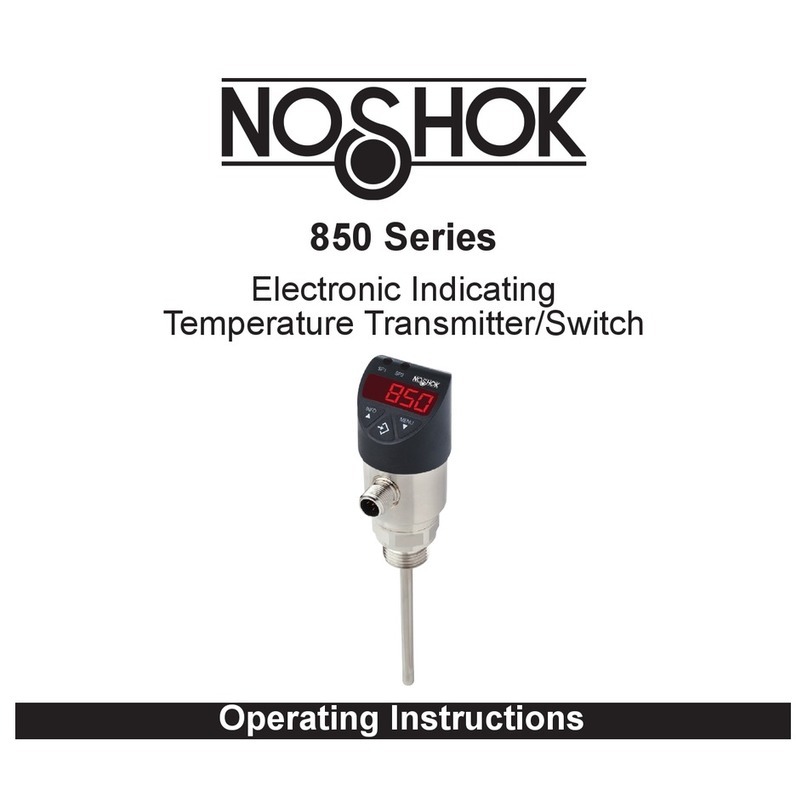
NOSHOK
NOSHOK 850 Series User manual
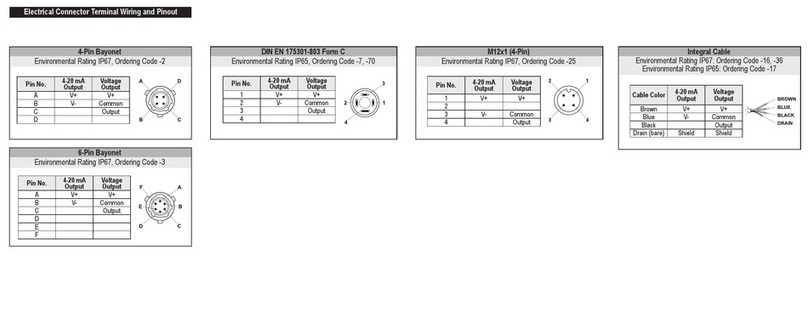
NOSHOK
NOSHOK PT40 Series User manual

NOSHOK
NOSHOK King-Gage 5800 Series Service manual
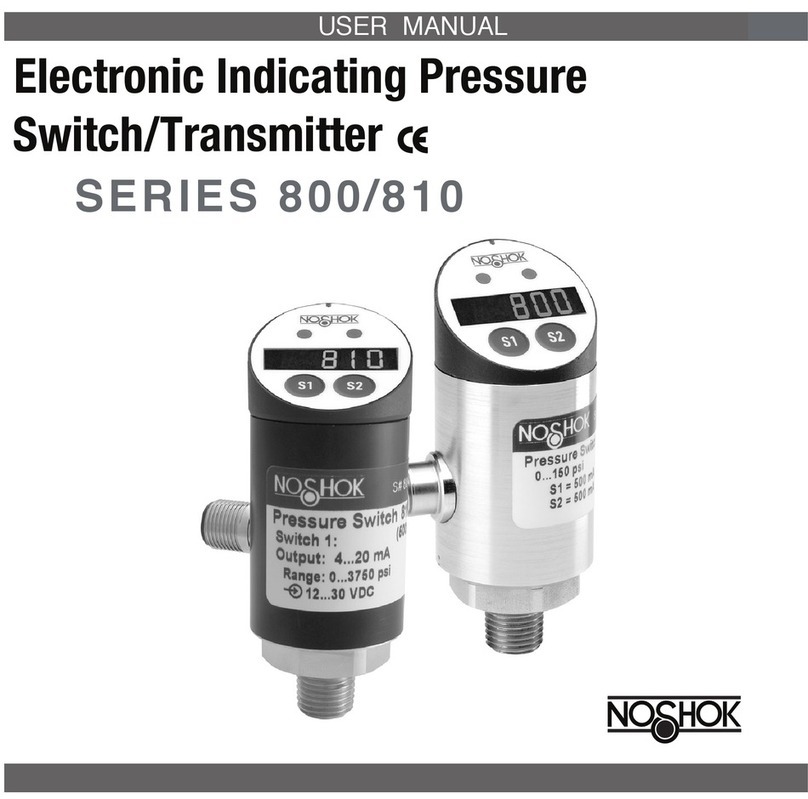
NOSHOK
NOSHOK 810 series User manual
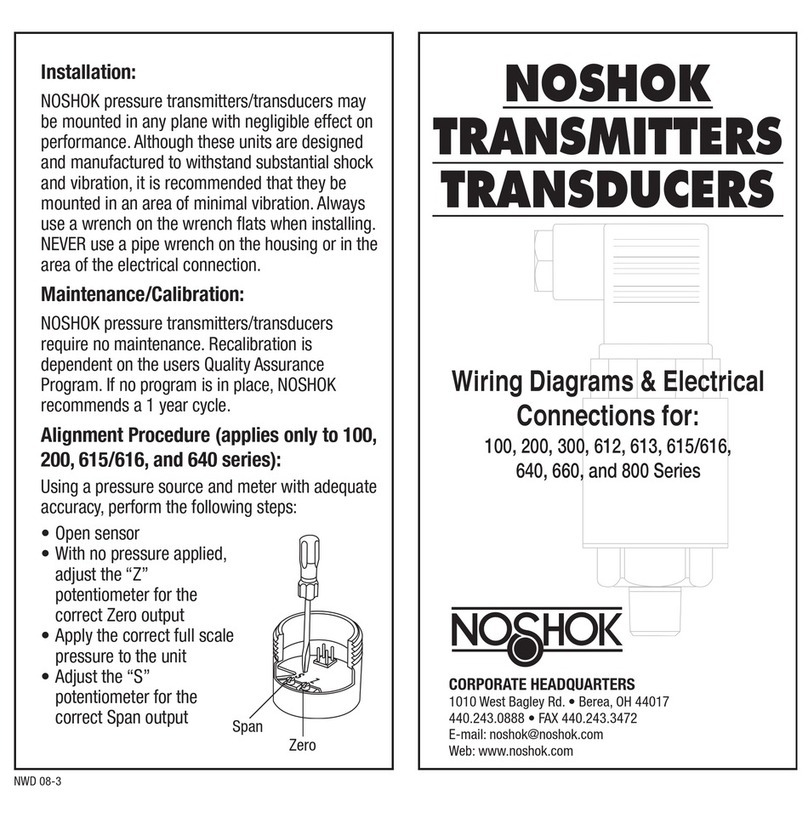
NOSHOK
NOSHOK 800 Series User manual

NOSHOK
NOSHOK 623 Series User manual

NOSHOK
NOSHOK 204 Series User manual
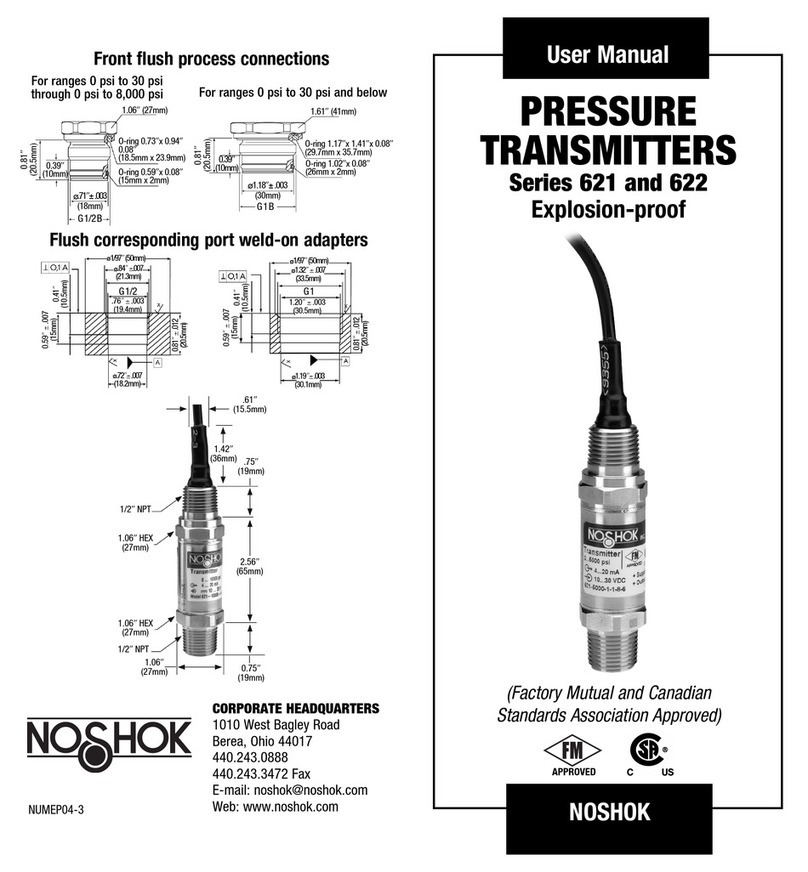
NOSHOK
NOSHOK 621 Series User manual
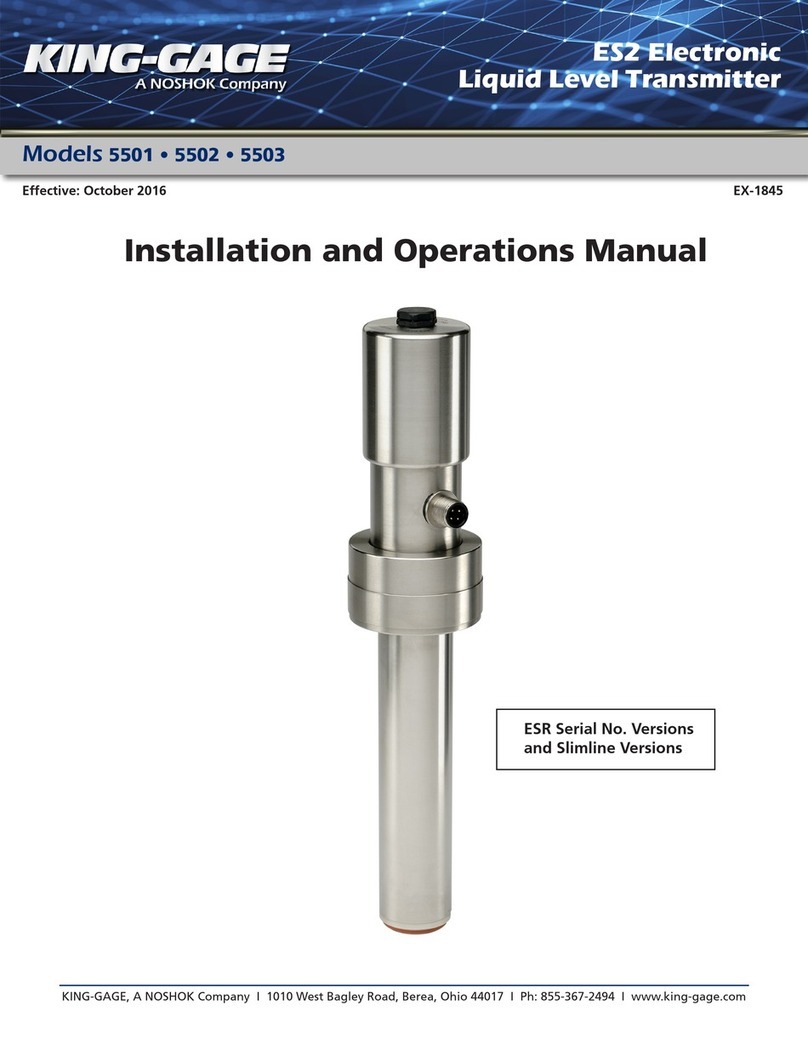
NOSHOK
NOSHOK KING-GAGE ES2 5501 User manual
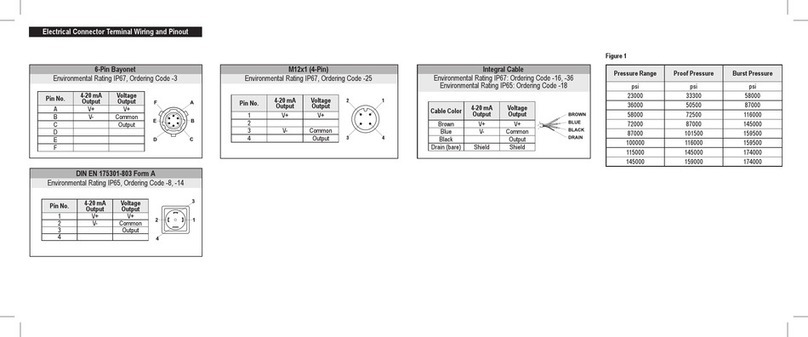
NOSHOK
NOSHOK PT41 Series User manual
Popular Transmitter manuals by other brands

Labom
Labom MiniTherm GV4730 Series operating instructions

Dräger
Dräger Polytron Transmitter IR Ex installation instructions
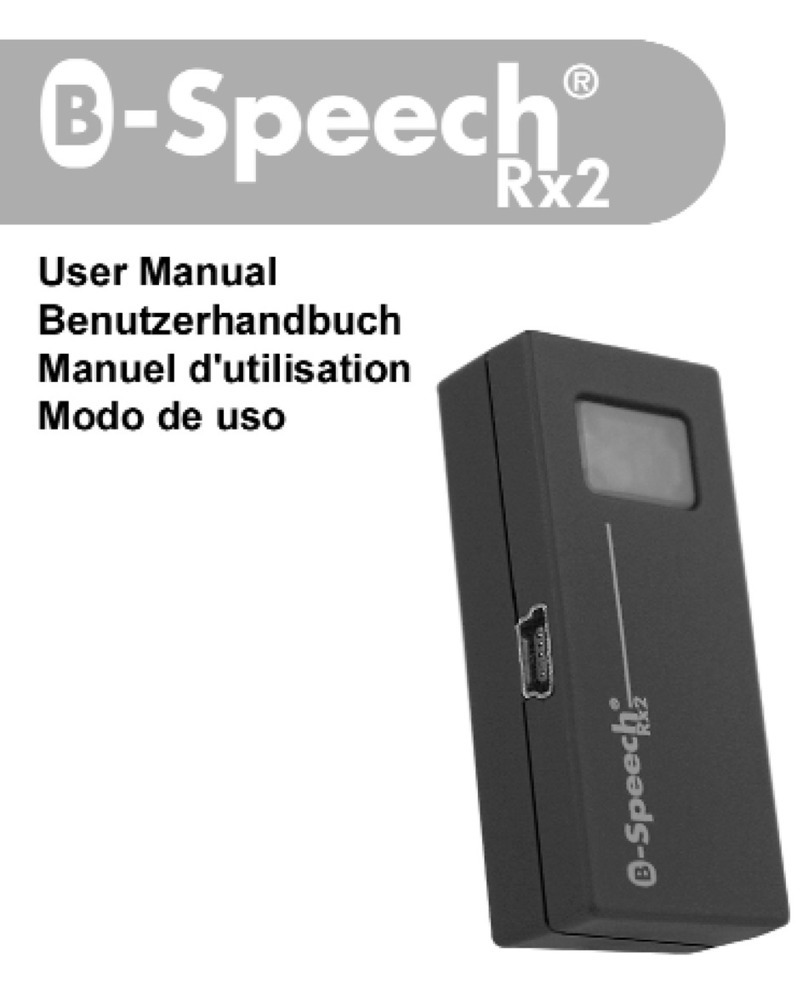
B-Speech
B-Speech RX2 user guide
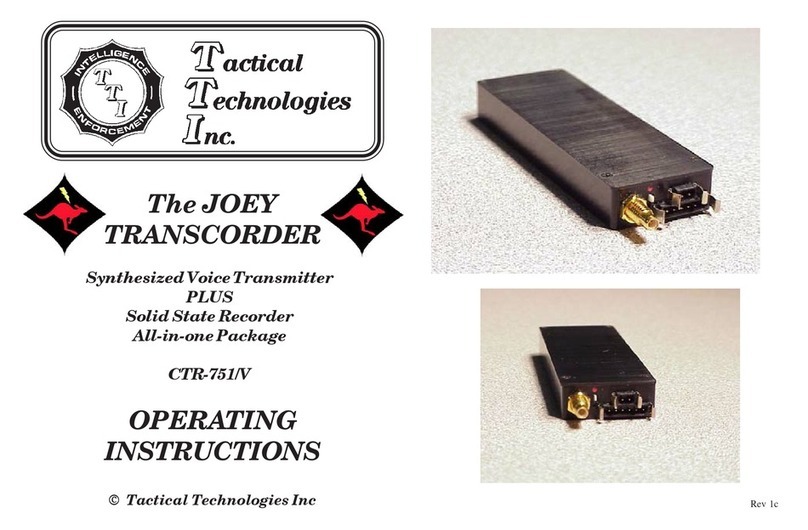
Tactical technologies
Tactical technologies Joey Transcorder operating instructions

Dynamix
Dynamix BLUECAST-2 manual

Vivax Metrotech
Vivax Metrotech vLoc3 Series user guide

